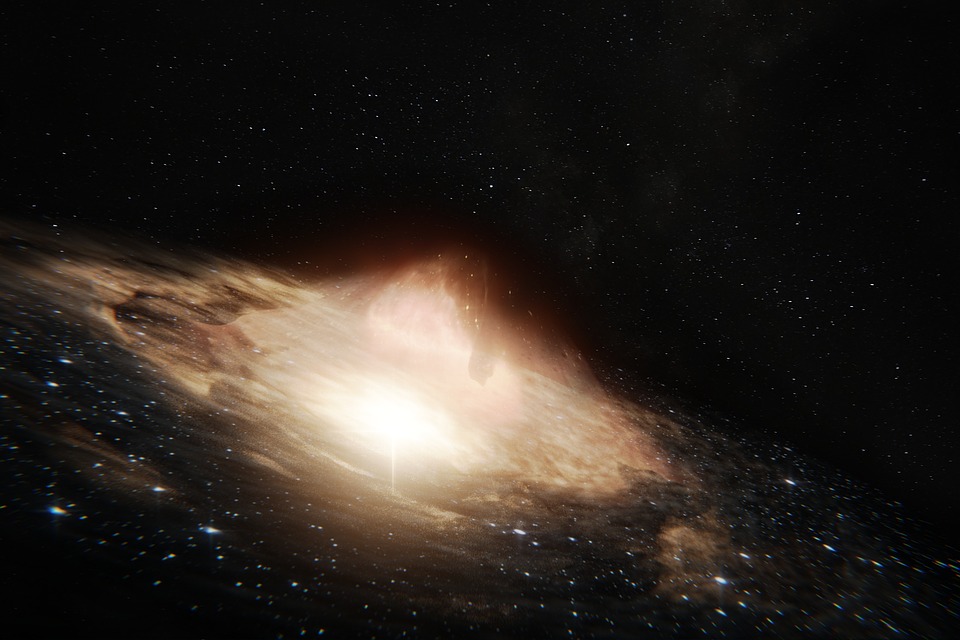The team operating the Hubble Space Telescope has revealed that the space telescope managed to witness a very big phenomenon in space. The telescope was able to observe perhaps one of the biggest outflows of energy in the universe.
Express reports that the Hubble Space Telescope recently observed 13 powerful outflows of energy in space. The outflows are said to be coming from what is referred to as quasars, which are active galactic cores that shine 1,000 times brighter than the stars within their galaxy. The outflows that were observed seem to tear through the galaxies at a rapid pace. According to NASA, the quasars each contain supermassive black holes that are fueled by the matter falling into them.
When materials fall into the black hole, the gases surrounding the well of gravity result in a release of radiation, making the black hole shine within the galaxy. The quasars these supermassive black holes are in, end up producing cosmic winds, pushing material away from the heart of the galaxy.
According to principal investigator Nahum Arav of Virginia Tech, “No other phenomena carries more mechanical energy. Over the lifetime of 10 million years, these outflows produce a million times more energy than a gamma-ray burst. The winds are pushing hundreds of solar masses of material each year.”
Gerard Kriss of the Space Telescope Science Institute said that the ultraviolet observations of the Hubble Space Telescope allow researchers to monitor energy output from quasars to cooler gas and to the hotter end of the spectrum.
Meanwhile, the agency’s EPIC camera captured one full orbit around the Earth in a satellite timelapse video. Shot by the Deep Space Climate Observatory almost one million miles away from Earth. According to NASA’s Adam Voiland, this was a piece of news that people can be happy about in the midst of trying times as of late. “It has been a tough month on Earth. Good news has been scarce. But here’s at least one update - from one million miles away - to appreciate.”
The video was made up of 3,000 pictures of Earth taken as far back as 2015 and pieced together. The EPIC camera photographed the planet’s day side every two hours, showing the gradual change in weather.



 FDA Lifts REMS Requirement for CAR-T Cell Cancer Therapies
FDA Lifts REMS Requirement for CAR-T Cell Cancer Therapies  Neuren Pharmaceuticals Surges on U.S. Patent Win for Rare Disorder Drug
Neuren Pharmaceuticals Surges on U.S. Patent Win for Rare Disorder Drug  SpaceX Starship Explodes in Texas During Test, Citing Nitrogen Tank Failure
SpaceX Starship Explodes in Texas During Test, Citing Nitrogen Tank Failure  NASA Resumes Cygnus XL Cargo Docking with Space Station After Software Fix
NASA Resumes Cygnus XL Cargo Docking with Space Station After Software Fix  Trump and Merck KGaA Partner to Slash IVF Drug Costs and Expand Fertility Coverage
Trump and Merck KGaA Partner to Slash IVF Drug Costs and Expand Fertility Coverage  Neuralink Expands Brain Implant Trials with 12 Global Patients
Neuralink Expands Brain Implant Trials with 12 Global Patients  SpaceX’s Starship Completes 11th Test Flight, Paving Way for Moon and Mars Missions
SpaceX’s Starship Completes 11th Test Flight, Paving Way for Moon and Mars Missions  Lab-grown meat: you may find it icky, but it could drive forward medical research
Lab-grown meat: you may find it icky, but it could drive forward medical research  Blue Origin’s New Glenn Achieves Breakthrough Success With First NASA Mission
Blue Origin’s New Glenn Achieves Breakthrough Success With First NASA Mission  Kennedy Sets September Deadline to Uncover Autism Causes Amid Controversy
Kennedy Sets September Deadline to Uncover Autism Causes Amid Controversy  Cogent Biosciences Soars 120% on Breakthrough Phase 3 Results for Bezuclastinib in GIST Treatment
Cogent Biosciences Soars 120% on Breakthrough Phase 3 Results for Bezuclastinib in GIST Treatment 































